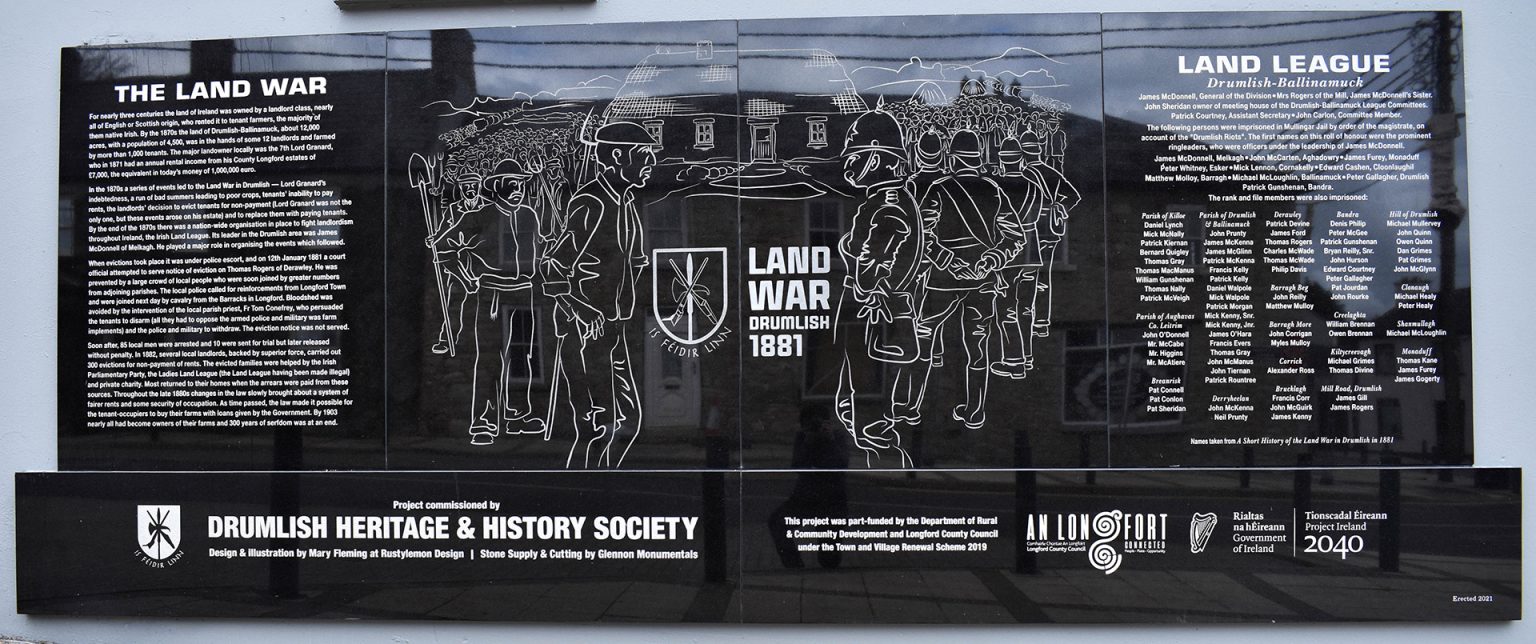Land War Memorial
Drumlish
The Land War Memorial stands in the town of Drumlish as a commemoration of The Land War, which took place in the 1870s. At this memorial, you will learn of the events which led to The Land War and its outcomes.
At the memorial, you will also learn the names of some of the local people involved in the Land League in the Drumlish-Ballinamuck area, many of whom were imprisoned as part of their involvement in The Land War.

The Land War
For nearly 300 years, the land of Ireland was owned by a landlord class who were nearly all of English or Scottish origin. They rented the land to tenant farmers, the majority of them native Irish.
By the 1870s, the 12,000 acres of Drumlish-Ballinamuck land had a population of 4,500. It was farmed by 1,000 tenants but belonged to only 12 landlords. The 7th Lord Granard was one of the major landlords in County Longford at the time, with an annual rental income of £7,000 in 1871, the equivalent of €1,000,000 today.
In the 1870s, bad summers led to poor crops, and tenants were unable to pay their rents. Landlords evicted these and replaced them with paying tenants. This led to the Land War in Drumlish.
The Irish Land League was in place by the end of the 1870s. This organisation fought landlordism throughout Ireland. Its leader in the Drumlish area was James McDonnell of Melkagh.
Evictions now took place under police escort. On 12 January 1881, a court official attempted to serve notice of eviction on Thomas Rogers of Derawley and a large crowd of locals and those adjoining parishes tried to prevent this.
Local police called for reinforcements from Longford town and were joined the next day by cavalry from the Barracks in Longford.
Bloodshed was avoided due to the intervention of the local parish priest, Fr Tom Conefrey. He persuaded the tenants to disarm and the police and military to withdraw. The eviction notice was not served.
Soon after, 85 local men were arrested and 10 were sent for trial, but later released without penalty.
In 1882, several local landlords, backed by superior force, carried out 300 evictions. The evicted families were helped by the Irish Parliamentary Party, the Ladies Land League and private charity. Most returned to their homes when the arrears were paid.
Throughout the late 1880s, changes in the law brought about a system of fairer rents and some security of occupation.
As time passed, the law made it possible for the tenant-occupiers to buy their farms with loans given by the Government. By 1903, nearly all had become owners of their farms, and 300 years of serfdom were at an end.



